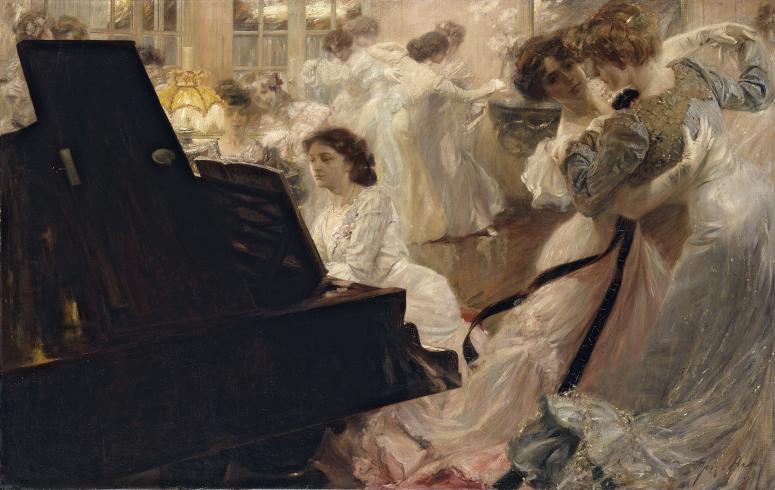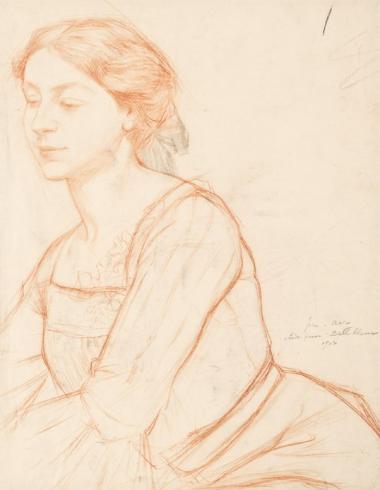This work refers to the dances organised for young high-society girls, before their entry into the adult world and the announcement of their engagement. This typical scene in a sitting room with a waxed floor symbolises the rite of passage. A young girl snuggles up to her mother to listen to the music, while her elders learn to dance a waltz.
The supple movements of the dancers, their lower backs arched by the corsets they are wearing, show off their S shaped figures which were typical of the fashion in 1900. The use of curves, highlighted by curled ribbons and lace, is linked to the curvilinear aesthetic of Art Nouveau. The Erard piano with its dark tones and sharp angles, placed diagonally in the left-hand corner of the picture, helps bring out the light-coloured dresses with their blue, pink and ivory tones. This French brand of piano was very common in sitting rooms in the late 19th century and during the first third of the 20th century. The oval medallion visible on the lifted lid indicates that this model won an award during a World Exhibition.
White Ball was one of the very first paintings acquired for the Petit Palais Museum, which had just been opened at the time. The choice of the work was made at the French Artists Salon, where Avy exhibited regularly from 1895 onwards.
A short comedy in two acts written in 1897 by Lucien Puech bears the same title as Avy’s painting. The plot brings together six young girls between 16 and 18 years of age, who declare that they find white balls, from which boys were excluded, extremely boring. They considered that it was “embarrassing that it still existed in 1900, at the dawn of the new century”. For the adolescents, these domestic parties during which they were forced to dance only with each other, were desperately monotonous. “We love to dance of course, but we love it because it allows you to flirt, which has helped a lot of our friends find the husband of their choice”. Although the expression white ball remained in use until WWI, the organisation of these parties for young girls, the innocent pleasures of which are immortalised in Avy’s picture, later evolved into a mixed event which was more conducive to finding a fiancé.
I. C.
See also: Study for the pianist in The White Ball

City of Paris municipal collection's website
The collections portal can be used to search the collections of Paris’s 14 municipal museums (approximately 336,000 works, including 43,000 belonging to the Petit Palais).
It is also possible to download around 12,000 images of the museum’s works free of charge.
Access the Museums of the City of Paris collections portal
Extern databases
Discover a selection of databases online presenting works from the Petit Palais or documents concerning the history of the museum.


